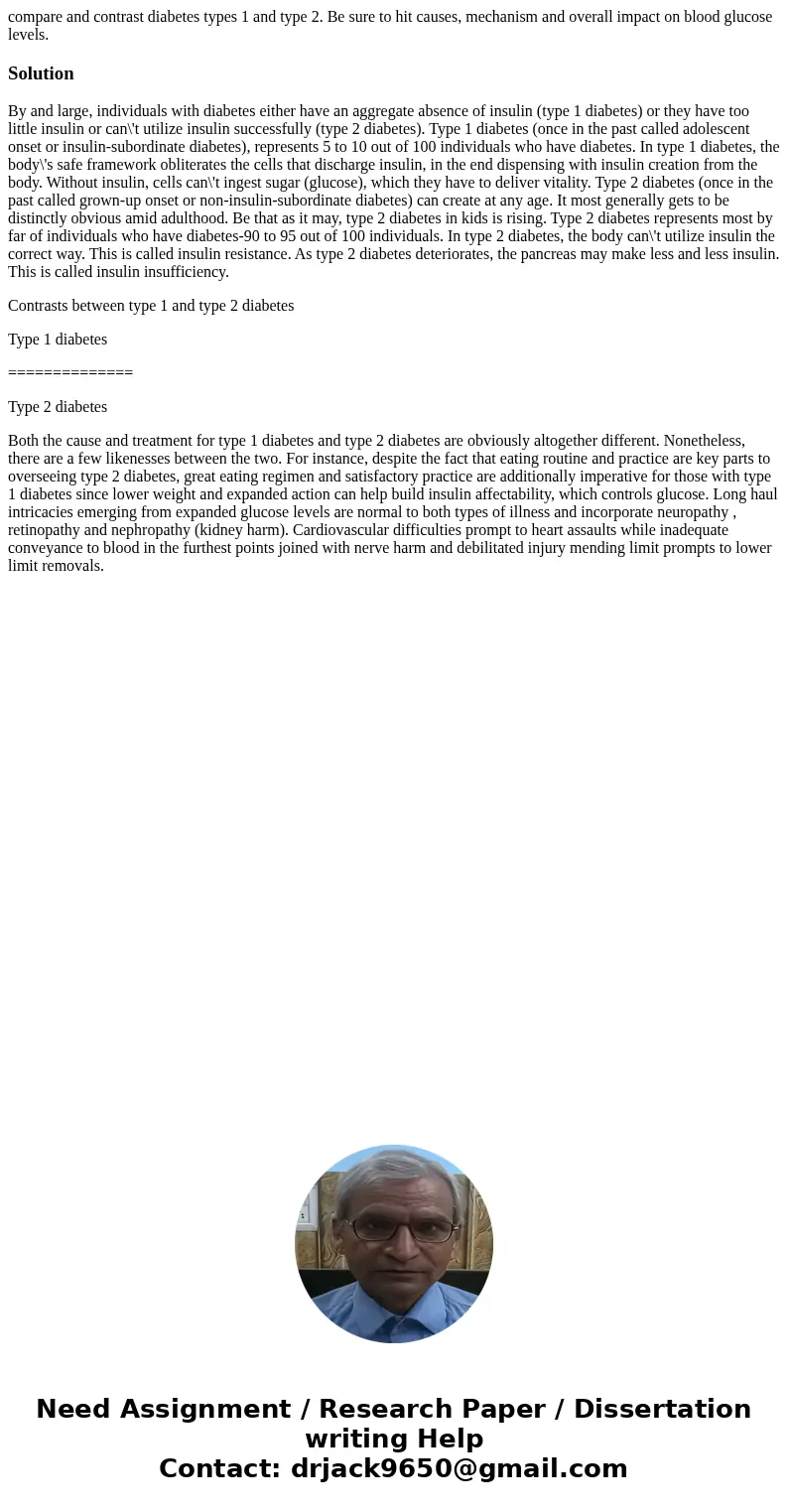compare and contrast diabetes types 1 and type 2 Be sure to
compare and contrast diabetes types 1 and type 2. Be sure to hit causes, mechanism and overall impact on blood glucose levels.
Solution
By and large, individuals with diabetes either have an aggregate absence of insulin (type 1 diabetes) or they have too little insulin or can\'t utilize insulin successfully (type 2 diabetes). Type 1 diabetes (once in the past called adolescent onset or insulin-subordinate diabetes), represents 5 to 10 out of 100 individuals who have diabetes. In type 1 diabetes, the body\'s safe framework obliterates the cells that discharge insulin, in the end dispensing with insulin creation from the body. Without insulin, cells can\'t ingest sugar (glucose), which they have to deliver vitality. Type 2 diabetes (once in the past called grown-up onset or non-insulin-subordinate diabetes) can create at any age. It most generally gets to be distinctly obvious amid adulthood. Be that as it may, type 2 diabetes in kids is rising. Type 2 diabetes represents most by far of individuals who have diabetes-90 to 95 out of 100 individuals. In type 2 diabetes, the body can\'t utilize insulin the correct way. This is called insulin resistance. As type 2 diabetes deteriorates, the pancreas may make less and less insulin. This is called insulin insufficiency.
Contrasts between type 1 and type 2 diabetes
Type 1 diabetes
==============
Type 2 diabetes
Both the cause and treatment for type 1 diabetes and type 2 diabetes are obviously altogether different. Nonetheless, there are a few likenesses between the two. For instance, despite the fact that eating routine and practice are key parts to overseeing type 2 diabetes, great eating regimen and satisfactory practice are additionally imperative for those with type 1 diabetes since lower weight and expanded action can help build insulin affectability, which controls glucose. Long haul intricacies emerging from expanded glucose levels are normal to both types of illness and incorporate neuropathy , retinopathy and nephropathy (kidney harm). Cardiovascular difficulties prompt to heart assaults while inadequate conveyance to blood in the furthest points joined with nerve harm and debilitated injury mending limit prompts to lower limit removals.

 Homework Sourse
Homework Sourse